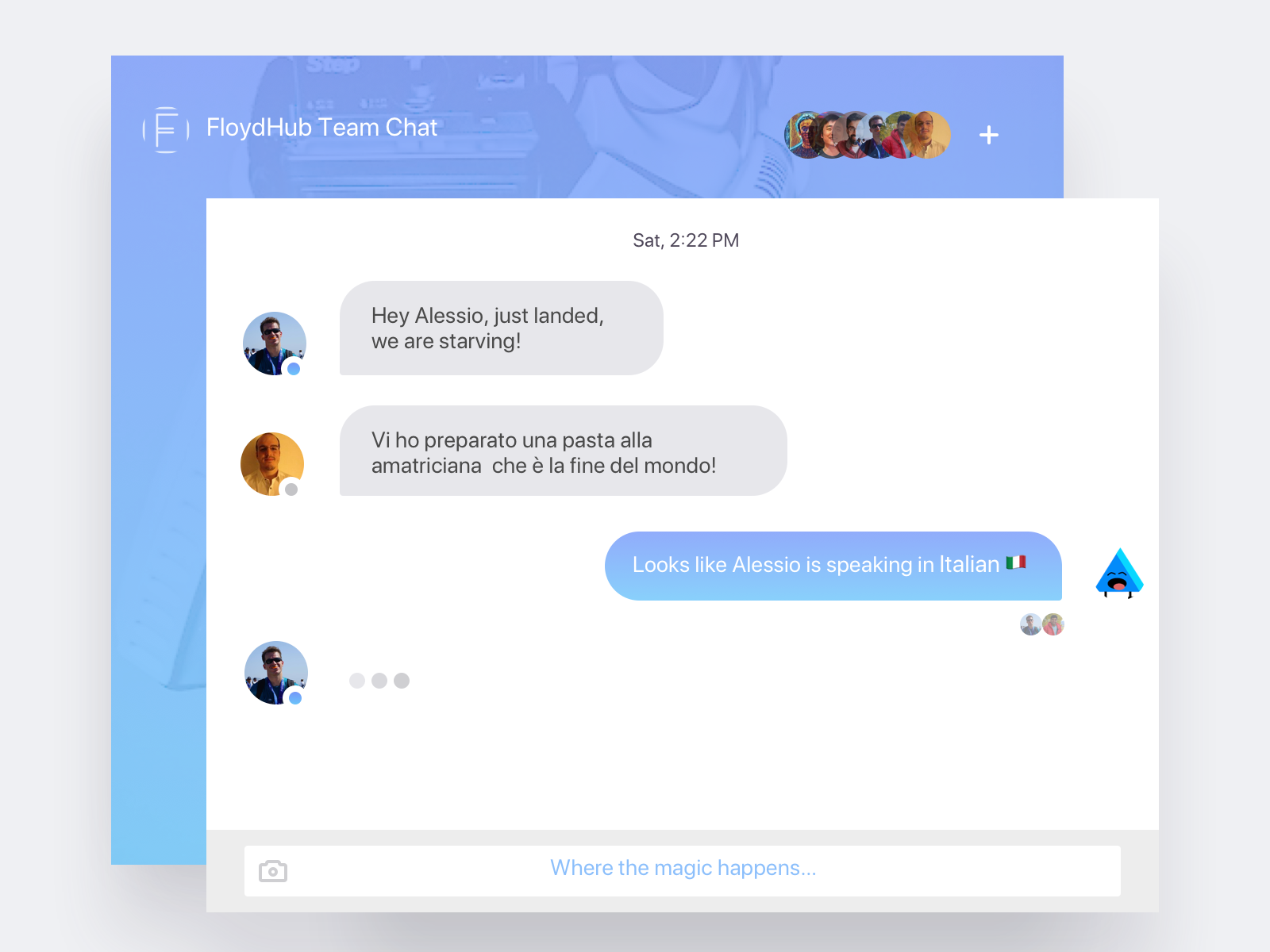Language identification is one of the most common feature of every Social Network or Web application, this is commonly paired with Machine Translation to improve the user experience and content accesibility(a must have in the 2.0 society). What can you use it for? This is a foundation for other features such as Machine Translation (as mentioned before) and post/tweets/articles and documents analysis.
Click this button to open a Workspace on FloydHub that will train this model.
In this notebook we will build a deep learning model able to detect the languages from short piceces of text (140 characters, old Tweets lenght) with high accuracy using neural networks. The task is commonly solved using hard-coded rules or NLP library, but we will attack the problem using Deep Learning.
Made with Sketch Group Chat
We have already gathered and extract the raw dataset from https://dumps.wikimedia.org for 7 languages: Italian, Spanish and French which are considered to be in Latin language group, English and German have also common roots. Czech and Slovakian are extremely similar and are considered to be one of major challenged in the language recognition.
| iso-code | language | example |
|---|---|---|
| en | English | Hello world! |
| fr | French | Bonjour tout le monde! |
| es | Spanish | Hola mundo! |
| it | Italian | Ciao mondo! |
| de | German | Hallo welt! |
| cz | Czech | Ahoj světe! |
| sk | Slovakian | Dobrý deň svet! |
We will:
- Preprocess text data for NLP
- Build and train Deep Neural Network using Keras and Tensorflow
- Evaluate our model on the test set
- Run the model on your own text!

